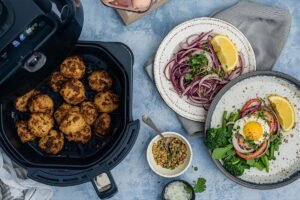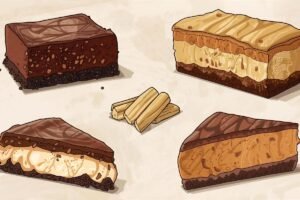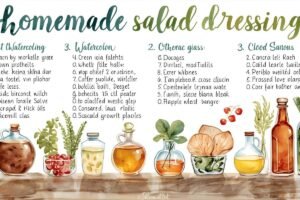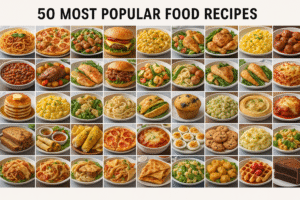There’s nothing quite like a slice of homemade chocolate cake recipe that melts in your mouth with every bite. Whether you’re celebrating a birthday, hosting a dinner party, or simply craving something sweet, this chocolate cake recipe delivers perfection every single time.
This moist chocolate cake is surprisingly easy to make, even for beginner bakers. With simple pantry ingredients and straightforward steps, you’ll create a decadent dessert that rivals any bakery creation. The best part? This recipe produces a tender crumb, deep chocolate flavor, and a texture so velvety it’ll become your go-to dessert.
In this comprehensive guide, you’ll learn how to bake the perfect chocolate cake from scratch, discover pro tips for success, explore delicious frosting options, and find answers to common baking questions.
Why This Chocolate Cake Recipe Works
This isn’t just any ordinary chocolate layer cake. What makes this recipe special is the combination of ingredients that create an exceptionally moist texture and intense chocolate flavor.
Key features of this recipe:
- Uses hot water or coffee to bloom the cocoa powder, intensifying the chocolate taste
- Incorporates buttermilk for tanginess and tenderness
- Contains oil instead of butter for maximum moisture retention
- Produces a perfectly balanced sweetness without being overpowering
- Creates a stable crumb that’s easy to frost and layer
The science behind this recipe ensures you get consistent results every time. The hot liquid activates the cocoa powder, bringing out deeper flavors. The combination of baking soda and baking powder creates the perfect rise and texture.
Ingredients You’ll Need for the Perfect Chocolate Cake
Before you start mixing, gather these essential ingredients. Most items are probably already in your pantry.
For the Chocolate Cake:
- 2 cups all-purpose flour (spooned and leveled)
- 2 cups granulated sugar
- ¾ cup unsweetened cocoa powder (Dutch-process or natural)
- 2 teaspoons baking soda
- 1 teaspoon baking powder
- 1 teaspoon salt
- 2 large eggs (room temperature)
- 1 cup buttermilk (room temperature)
- 1 cup hot coffee or hot water
- ½ cup vegetable oil or canola oil
- 2 teaspoons pure vanilla extract
For the Chocolate Frosting:
- 1 cup unsalted butter (softened)
- 3½ cups powdered sugar
- ¾ cup unsweetened cocoa powder
- ⅓ cup heavy cream or whole milk
- 2 teaspoons vanilla extract
- Pinch of salt
Pro ingredient tips:
Quality cocoa powder makes a significant difference. Dutch-process cocoa creates a darker, more refined flavor, while natural cocoa offers a lighter, more acidic taste. Both work beautifully in this recipe.
For the most moist chocolate cake, don’t skip the coffee. It won’t make your cake taste like coffee but will enhance the chocolate flavor dramatically. If you prefer, substitute with hot water.
Step-by-Step Instructions for Your Chocolate Cake Recipe
Follow these detailed steps to create your masterpiece. Take your time and enjoy the process.
Preparing Your Baking Setup
Start by preheating your oven to 350°F (175°C). Grease two 9-inch round cake pans with butter or non-stick spray, then line the bottoms with parchment paper circles. This ensures easy removal and prevents sticking.
Dust the pans lightly with cocoa powder instead of flour for a professional finish without white residue on your dark cake.
Mixing the Dry Ingredients
In a large mixing bowl, sift together the flour, sugar, cocoa powder, baking soda, baking powder, and salt. Sifting is crucial for removing lumps and aerating the dry ingredients, resulting in a lighter cake texture.
Whisk everything together thoroughly to ensure even distribution of the leavening agents.
Combining the Wet Ingredients
In a separate medium bowl, whisk together the eggs, buttermilk, vegetable oil, and vanilla extract until well combined. The mixture should be smooth and homogeneous.
Room temperature ingredients blend more easily and create a better emulsion, leading to superior texture.
Creating the Batter
Add the wet ingredients to the dry ingredients and mix with a hand mixer or stand mixer on medium speed for about 2 minutes. The batter will be thick at this stage.
Carefully pour in the hot coffee or water while mixing on low speed. The batter will become very thin—this is completely normal and exactly what you want for an ultra-moist cake.
Mix just until combined, being careful not to overmix. A few small lumps are okay.
Baking Your Chocolate Cake
Divide the batter evenly between your prepared pans. A kitchen scale helps ensure equal layers, or simply eyeball it for slightly different-sized layers.
Bake for 30-35 minutes, or until a toothpick inserted into the center comes out with just a few moist crumbs. The cakes should spring back when gently pressed.
Avoid overbaking, as this creates a dry cake. Start checking at the 28-minute mark.
Cooling Process
Let the cakes cool in the pans for 10-15 minutes on a wire rack. This cooling period allows the structure to set properly.
Run a knife around the edges, then invert onto the wire rack to cool completely. Remove the parchment paper and let the layers cool for at least one hour before frosting.
Never frost warm cake—the frosting will melt and slide off.
Making the Perfect Chocolate Buttercream Frosting
While your cake layers cool, prepare this silky chocolate frosting that pairs perfectly with the moist cake.
Beat the softened butter on medium-high speed for 3-4 minutes until light and fluffy. This incorporates air and creates a smooth base.
Sift the powdered sugar and cocoa powder together, then add to the butter in three additions, mixing on low speed between each addition.
Add the vanilla extract, salt, and 2 tablespoons of heavy cream. Beat on medium speed for 2 minutes.
Adjust the consistency by adding more cream (1 tablespoon at a time) for a softer frosting, or more powdered sugar for a stiffer consistency.
Beat on high speed for 1-2 minutes for an ultra-smooth, spreadable frosting.
Assembly and Decoration Tips
Place your first cake layer on a serving plate or cake stand. For cleaner results, use parchment paper strips tucked under the cake edges—remove them after frosting.
Spread about 1 cup of frosting evenly across the top of the bottom layer, leaving a small border around the edge.
Place the second layer on top, ensuring it’s centered and level. Apply a thin crumb coat (a thin layer of frosting) over the entire cake to seal in crumbs.
Refrigerate for 15-20 minutes to set the crumb coat, then apply the final layer of frosting generously.
Decoration ideas:
- Pipe decorative borders or rosettes using a piping bag
- Add chocolate shavings or curls on top
- Dust with cocoa powder for an elegant finish
- Top with fresh berries for color contrast
- Drizzle with chocolate ganache for extra decadence
Expert Baking Tips for Success
Master these professional techniques to elevate your homemade chocolate cake every time.
Use quality ingredients: Premium cocoa powder and real vanilla extract make a noticeable difference in flavor depth.
Measure accurately: Use the spoon-and-level method for flour to avoid dense, heavy cake. Too much flour is the most common baking mistake.
Don’t skip room temperature ingredients: Cold eggs and buttermilk don’t emulsify properly with oil, creating texture issues.
Test for doneness properly: A few moist crumbs on the toothpick are perfect. Clean toothpicks indicate overbaking.
Level your layers: Use a serrated knife or cake leveler to trim domed tops for professional-looking, stable layers.
Store correctly: Keep frosted cake covered at room temperature for up to 2 days, or refrigerate for up to 5 days. Bring to room temperature before serving for best texture.
Popular Variations of This Chocolate Cake Recipe
Transform this base recipe into different delicious desserts with simple modifications.
Chocolate Cupcakes
Use the same batter to create 24 standard cupcakes. Fill cupcake liners two-thirds full and bake at 350°F for 18-22 minutes.
Chocolate Sheet Cake
Pour batter into a greased 9×13-inch pan and bake for 35-40 minutes. Perfect for casual gatherings and potlucks.
Triple Chocolate Cake
Fold in 1 cup of chocolate chips into the batter before baking for extra chocolate bursts throughout.
Chocolate Peanut Butter Cake
Substitute the chocolate frosting with peanut butter frosting, or create layers alternating between both frostings.
Chocolate Raspberry Cake
Spread raspberry jam between the layers and garnish with fresh raspberries for a fruity twist.
German Chocolate Cake
Top with coconut-pecan frosting instead of chocolate buttercream for a classic variation.
Storage and Make-Ahead Instructions
Planning ahead? This chocolate cake recipe is wonderfully flexible for advance preparation.
Unfrosted cake layers: Wrap cooled layers tightly in plastic wrap, then aluminum foil. Store at room temperature for 2 days, refrigerate for up to 1 week, or freeze for up to 3 months.
Frosted cake: Cover and store at room temperature for up to 2 days in a cool environment. Refrigerate for up to 5 days if your kitchen is warm or if using perishable fillings.
Freezing frosted cake: Flash freeze uncovered until firm, then wrap carefully in plastic wrap and foil. Freeze for up to 2 months. Thaw overnight in the refrigerator.
Frosting separately: Store chocolate buttercream in an airtight container in the refrigerator for up to 1 week. Bring to room temperature and re-whip before using.
For best results when serving refrigerated cake, let it sit at room temperature for 30-60 minutes. Cold cake is firmer and less flavorful than room temperature cake.
Common Baking Problems and Solutions
Even experienced bakers encounter issues. Here’s how to troubleshoot common chocolate cake problems.
Dense, heavy texture: This usually results from overmixing the batter or using too much flour. Mix just until combined and measure flour accurately.
Dry cake: Overbaking is the culprit. Check cakes a few minutes early and remove them when slightly underdone. They continue cooking while cooling.
Cake sinking in the middle: Opening the oven door too early causes temperature drops. Expired leavening agents also contribute to sinking. Always use fresh baking soda and powder.
Crumbly cake that falls apart: Undermixing or not enough fat can cause this. Ensure thorough mixing of wet and dry ingredients.
Domed cake tops: This is normal but can be prevented by using baking strips around your pans or reducing oven temperature by 25°F.
Frosting sliding off: The cake is too warm. Always cool completely before frosting and consider refrigerating between layers.
Conclusion
This chocolate cake recipe proves that creating an incredibly moist, richly flavored dessert at home doesn’t require professional skills or complicated techniques. With simple ingredients and straightforward instructions, you can bake a showstopping chocolate layer cake that impresses family and friends.
The combination of hot liquid to bloom the cocoa, buttermilk for tenderness, and oil for moisture creates the ultimate texture. Whether you’re making birthday cakes, celebration desserts, or satisfying a chocolate craving, this recipe delivers consistent, delicious results.
Remember the key tips: don’t overmix the batter, don’t overbake the cakes, and always cool completely before frosting. With these fundamentals mastered, you’ll create bakery-quality chocolate cakes every time.
Now it’s time to preheat that oven and start baking. Your kitchen will smell absolutely amazing, and the first bite of your homemade chocolate cake will make all the effort worthwhile. Happy baking!
Read More: Baking Recipes Without Oven 15 Easy No-Bake Treats Guide








